The New Normal: California Forest Fires Have Doubled in Size
This Year 3,449 Wildfires Have Already Consumed 92,439 Acres
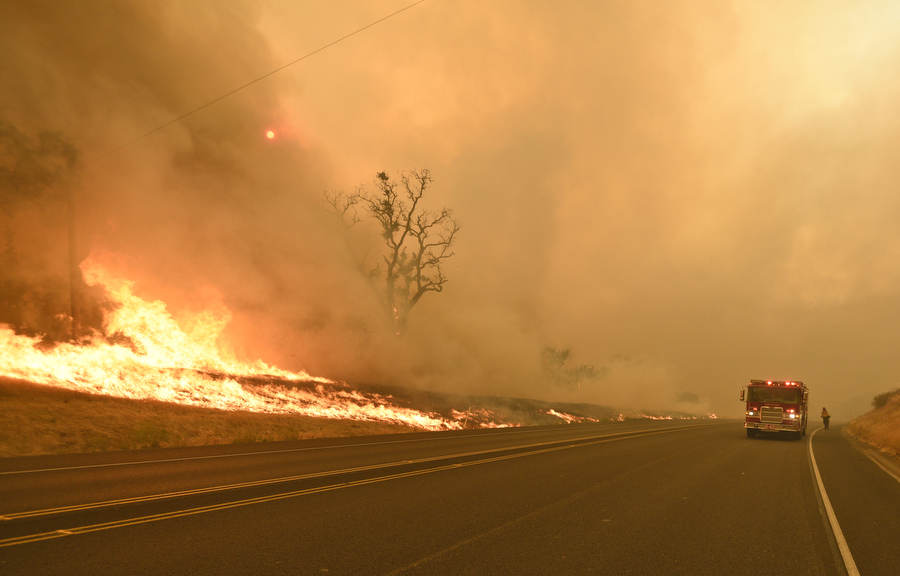
At 6:22 last Thursday evening, July 6, snowflakes of ash began falling in downtown Santa Barbara, thanks to one of the Central Coast’s recent wildfires, bathing everything — and everyone — in that sickly beautiful translucence that can only be generated by an inferno. As the sun went down, the moon rose — full, round, and a deep blood orange. Photographers rushed to capture the astonishing night sky. But for those of us who have witnessed years of vast wildland blazes rampaging throughout Southern California, such visual poetics have long lost their appeal. The “new normal” is too scary to be aesthetically savored. Not long ago, California had something known as a fire season. No more. “When veteran firefighters with 30 to 40 years’ experience looked at what’s been happening, they described it as ‘unprecedented,’” said Janet Upton, spokesperson for Cal Fire. “But after the same thing happens year after year, you really can’t call it ‘unprecedented’ anymore.” Hence the “new normal.”
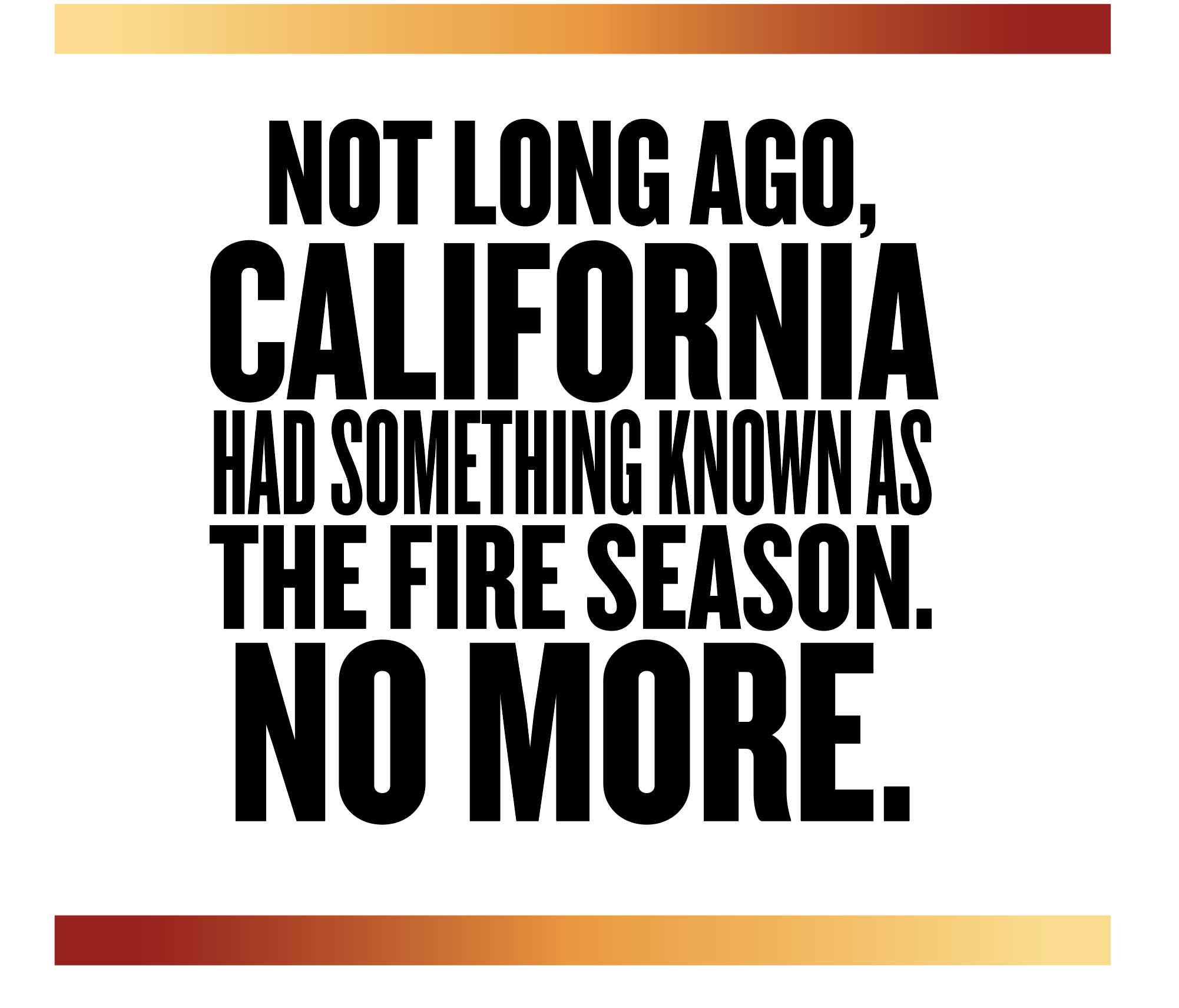
From January 1-July 9, 2016, Cal Fire reported 2,270 fires on the more than 31 million acres for which it’s responsible. This year, there have been nearly 700 more; the burned acreage has more than doubled, jumping from 30,574 to 68,129. And that doesn’t count the number of fires blazing away on the 31 million acres controlled by the United States Forest Service. Year to date, California has experienced 3,449 forest fires consuming 92,439 acres. Little wonder, then, that when the Whittier Fire started near Lake Cachuma last week, there were already 35 other fires burning elsewhere in California — 14, including Whittier, of which have been deemed serious. The biggest is just up Highway 101, eight miles east of Santa Maria; that’s the Alamo Fire, which, at last count, has voraciously consumed nearly 30,000 acres. With so many fires raging, it’s no surprise that Whittier or Alamo couldn’t get the same resources — firefighters, engines, fixed-wing aircraft — that Santa Barbara got last year when we needed to put out the now all-but-forgotten Sherpa Fire.
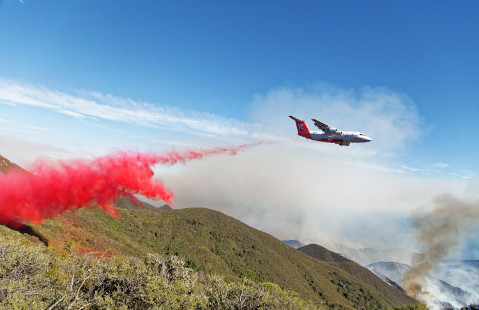
Like its rainfall, California’s forest fires are part of a natural dynamic dating back millions of years: feast or famine, boom or bust. Even without human intervention, California cycles gravitate toward the extreme. But those extremes are growing. Climate change is a main suspect. Last year, for example, the National Academy of Sciences concluded in a published report that during the past 30 years climate change has doubled the amount of western United States acreage experiencing forest fires, and the landmass temperature of the country has risen 2.5 degrees Fahrenheit. The same study also concluded that climate change is not the only factor fueling the flames. During the past 100 years, forest fires — naturally occurring phenomena — have been ruthlessly extinguished throughout the same region, allowing a proliferation of biofuels just waiting to be ignited. Republicans in Congress have seized upon this latter interpretation as an excuse to open the forests up to logging interests. One such bill is now wending its way through Congress. Santa Barbara Congressmember Salud Carbajal, a Democrat, is opposing it.
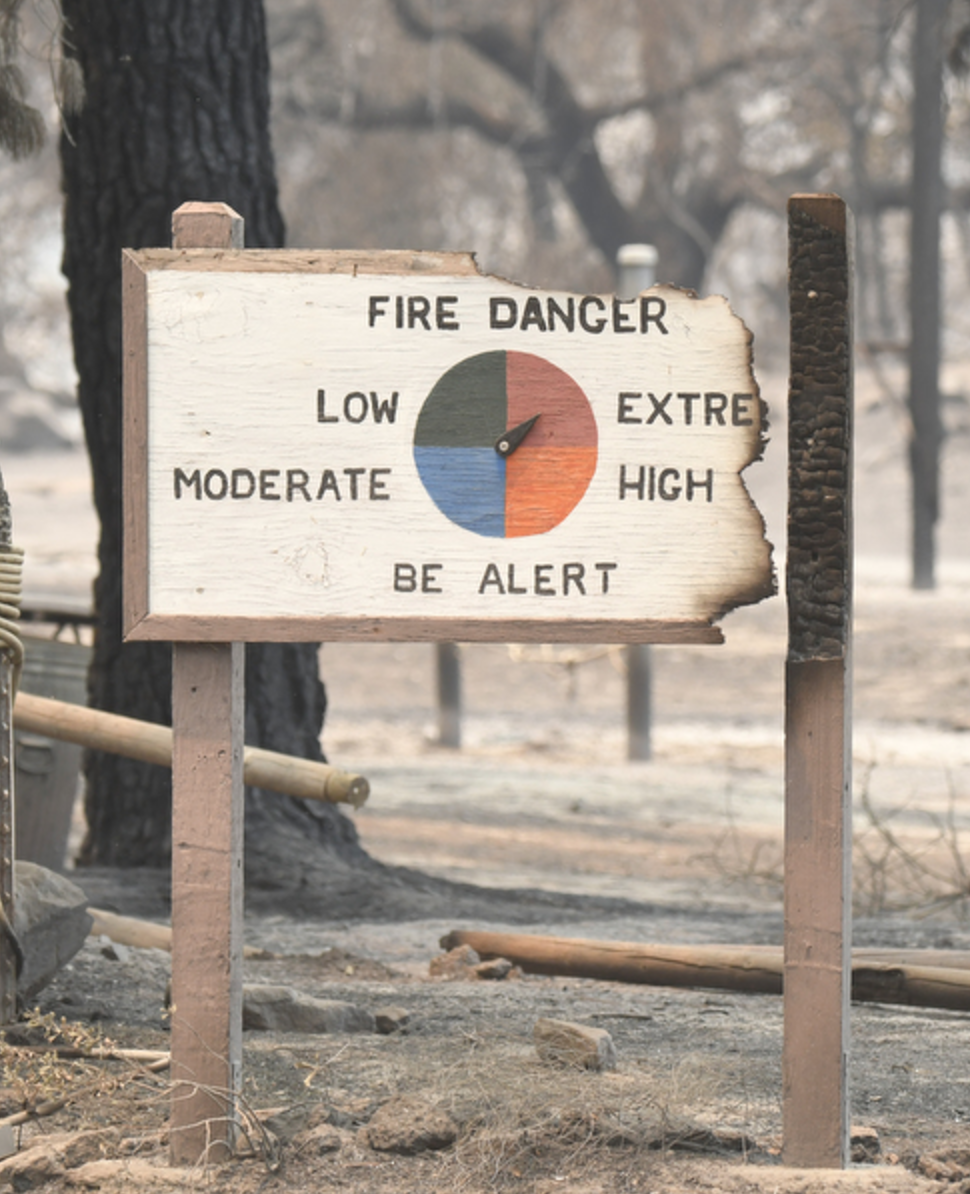
Thinning Santa Barbara’s oaks would probably have had little impact on the Whittier Fire. UCLA ecology professor and wildfire expert Glen MacDonald said this year’s heavy rains — arriving on the heels of a prolonged bone-cracking drought — is driving the proliferation of these early wildfires. Dennis Burns, a wildfire behavior analyst with the Livermore-Pleasanton Fire Department who is now working on the Whittier Fire, said, “Normally, we estimate there’s a quarter-ton to a ton of grass per acre. This year, it’s two to three tons an acre.” The valley grasses are deep enough to catch fire even when soaked with the orange flame-retardant chemicals dropped from planes. Normally, the valley chaparral secretes natural oils that prevent undergrowth, but in this wet year, those oils were diluted, allowing grassy fuels to thrive.
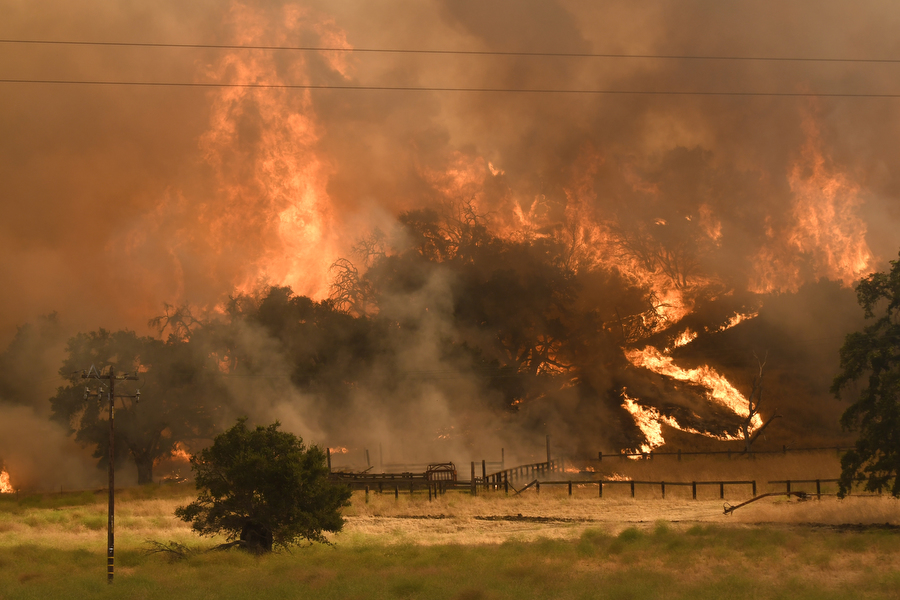
The cost of containing backcountry wildfires has grown so dramatically that about 70 percent of Los Padres National Forest’s budget is consumed by fire suppression. For the U.S. Forest Service, that number is closer to 50 percent across the nation, a stark jump from 16 percent in 1995. Cal Fire spends roughly half a billion dollars a year fighting fires on its lands. With state and federal budgets constrained, frictions are rising. California’s director of the Governor’s Office of Emergency Services (OES), Mark Ghilarducci, vented earlier this month in a letter to the Forest Service Chief Thomas Tidwell, all but accusing him of short-changing California local fire departments for services rendered on federal Forest Service lands to the tune of $18 million. California relies on a web of “mutual aid” agreements among federal, state, and local firefighting agencies to keep wildfires in check. Underpinning this system is the expectation that everyone gets paid. “I cannot continue to support the deployment of resources to protect federal land that ultimately may bankrupt our local governments,” Ghilarducci wrote Tidwell. Some in the Forest Service are privately seething over what they term a gratuitously “ludicrous” letter — delivered at the height of fire season.
Late Tuesday, Tidwell responded sharply to Ghilarducci after first affirming the Forest Service’s commitment to collaboration. “We respect the actions of all firefighting personnel who serve side by side on the wildfires in California where we don’t all wear blue or green uniforms, but yellow that signifies our shared unity.” Tidwell then noted that $14 million of the $18 million had already been paid to local firefighting agencies and that half of the remaining $4 million is currently being processed. Tidwell added that a recent federal audit “found that local cooperators [in California] used excessive and unreasonable indirect costs for activities,” including $4.5 million in administrative costs charged by nine California agencies. “It was determined the Forest Service was overpaying local governments during that period and that controls need to be in place to ensure they did not occur again.” These tensions between California and the feds hardly sprang up overnight, and based upon the letter exchange, they’re not going away anytime soon. Tidwell closed by chastising the OES for not providing the proper invoices needed for bills to be paid. “Despite our efforts for the past several years, we have had marginal compliance from the OES staff.”
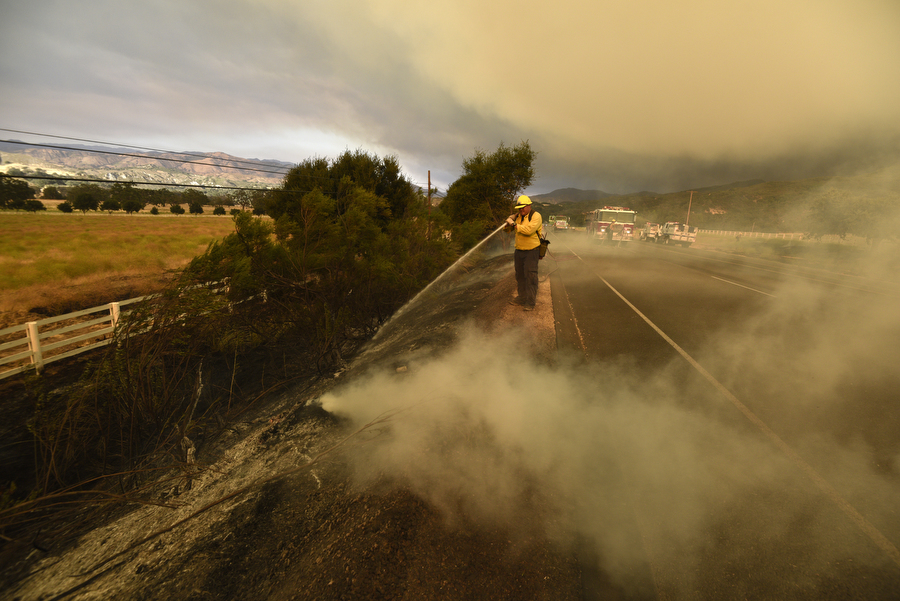
The issue is hardly new. “We’re talking hundreds of millions of dollars system-wide,” said Santa Barbara Fire Chief Pat McElroy. He said the Forest Service still owes his department $90,000, but that Santa Barbara can weather the delay. If you’re a small agency, he said, “a $50,000 bill that goes unpaid year after year can kill you.” While such disputes might consume the federal and state higher-ups, “It’s not affecting how anyone is fighting this fire,” he said.
It’s true that Whittier incident command has faced keen competition for resources, McElroy noted, but he insisted the fire would still be burning even if they got everything they wanted. “It’s not like you go in with a pitcher of water and pour it on the fire,” he said. “You paint it in a box and keep it there. If we had everything we wanted, we’d be able to fight it differently, but we’d still be fighting it.”



